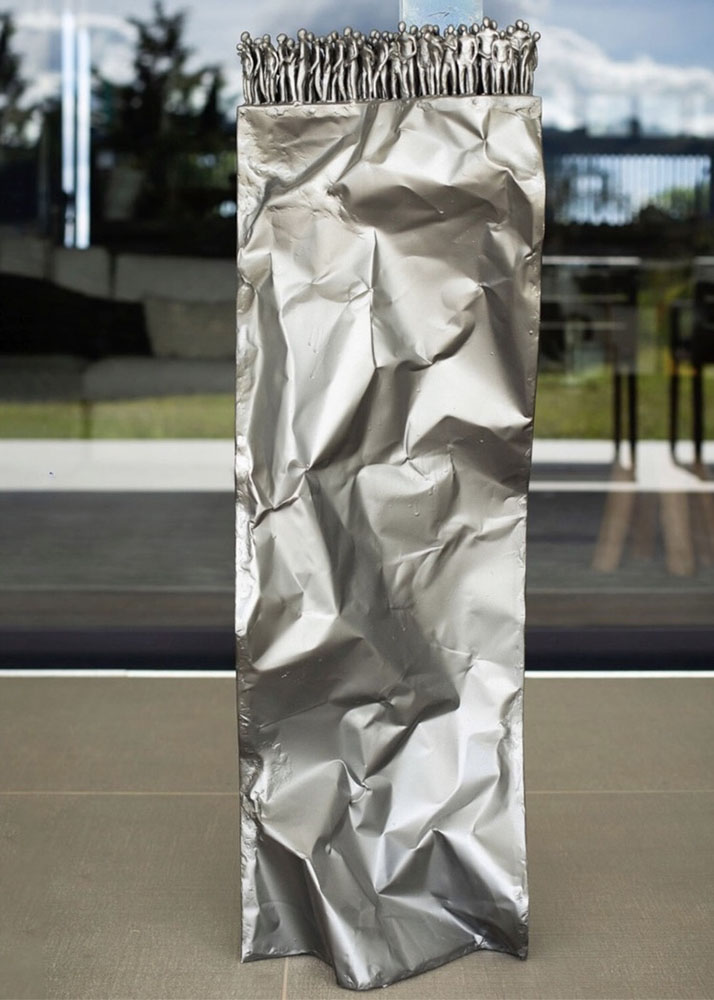In memory of Fernando Botero

 |
 |
Left: Danilo Cuadros, Vacío Ciego, Resin, Metal, Graphite and Laquer, 40 x 8 x 11 inches.
Right: Visit to the Museo de Antioquia
For much of the last century, Medellín was known as the capital of Colombia’s civil conflict as a result of drug lord Pablo Escobar and the global cocaine trade. In recent years, though, as the violence subsided, the city has gradually acquired its due recognition as a global capital of arts and culture. It was this burgeoning reputation that drew me to the city this past May!
The city’s vital art scene is reflected in the evolution of Comuna-13. Occupying a prime position between the city and the mountains to act as a corridor for drug and weapons traffic, the barrio witnessed decades of violence as warring factions vied for control of the neighborhood. These groups were finally expelled from the area in 2002 and the neighborhood is now one of the most vibrant of the city, with energetic murals dominating all available surfaces. I thought the neighborhood well encapsulated the spirit of contemporary Colombian art; a tradition simultaneously concerned with the past and bursting with an avant-garde dynamism. Contemporary Colombian artists carry the weight of their country’s turbulent and fractious history, but are particularly skilled at metabolizing it into playful and incisive artistic forms.



A titan of Colombian modernism, Fernando Botero’s signature style illustrates this mentality. The artist, who recently passed at the age of 91, was known for translating memories of the war years into a playful language of rotund and exaggerated forms- deftly mocking the architects of the violence and revealing the absurdity of 40 years of hostilities.
The satirization of governmental corruption continues to occupy the minds of contemporary practitioners. I had the privilege of meeting Jorge Julián Aristozábal at a showing of his Color Press series, wherein the artist recasts newspaper images into cartoonish, villainish, or indistinct characters. Artist Danilo Cuadros, whom I visited in his studio, preferred to wear his criticism directly on his chest- sporting a t-shirt that modified the Coca-Cola logo with the word Corrup-cíon. I also visited the studio of Gustavo Vélez who, like Botero, values intervening in public space with monumental sculptural installations.

 |
 |
 |
 |
Jorge Julián Aristizábal, Color Press, Acrylic on newspaper, variable dimensions, 2013-2014.

 |
 |
Left: Visit to the studio of artist Gustavo Vélez.
Right: Gustavo Vélez sculpture installed in a client’s home.
The Colombian art scene is more active and exuberant than ever and- with hostilities now contained- the eye of international collectors and tastemakers has settled on its rich landscape.
Other must-sees for anyone planning a trip would be the permanent collection of the Museo de Antioquia, the works of Thomas Ochoa at the Galeria Duque Arango, and the many public sculptures in Plaza Botero!
For more information about Colombian or Latin American art, don’t hesitate to reach out!








